Sage green, a beautiful and soothing color, is a soft and muted shade of green with a gentle gray undertone. It is widely recognized for its versatility and contemporary appeal, making it a popular choice in interior design and painting projects.
In this comprehensive guide, we will take you through the step-by-step process of creating your very own sage green paint. By following these instructions, you will have the opportunity to customize the shade to your exact preferences, ensuring a truly personalized touch to your living space. Not only will this allow you to unleash your creativity, but it can also potentially save you money.
Whether you are an experienced artist, a passionate DIY enthusiast, or simply someone looking to revamp their home, understanding the art of mixing paint is a valuable skill. With our guidance, you will gain a deeper appreciation for the intricacies of color mixing and embark on an exciting journey to create the perfect sage green paint. So let’s dive in and get started on this delightful creative endeavor!
What Colors Make Sage Green Color Paint?
To create the beautiful and soothing sage green color, you will need to combine three primary colors: blue, yellow, and white. The magic of sage green lies in the delicate balance of these hues. By mixing a measured amount of yellow and blue, you will achieve a basic, muted green that forms the foundation of sage green. But it doesn’t end there! To achieve the desired lighter and more subdued tone, the addition of white is crucial. The white paint softens the green, giving it a gentle and calming effect reminiscent of fresh sage leaves.
If you prefer a touch of gray to your sage green, you can experiment by adding a tiny bit of black or gray paint. Remember, mixing paint is an art, not a science, so don’t hesitate to play around with different proportions to achieve the perfect shade that resonates with your aesthetic sensibilities.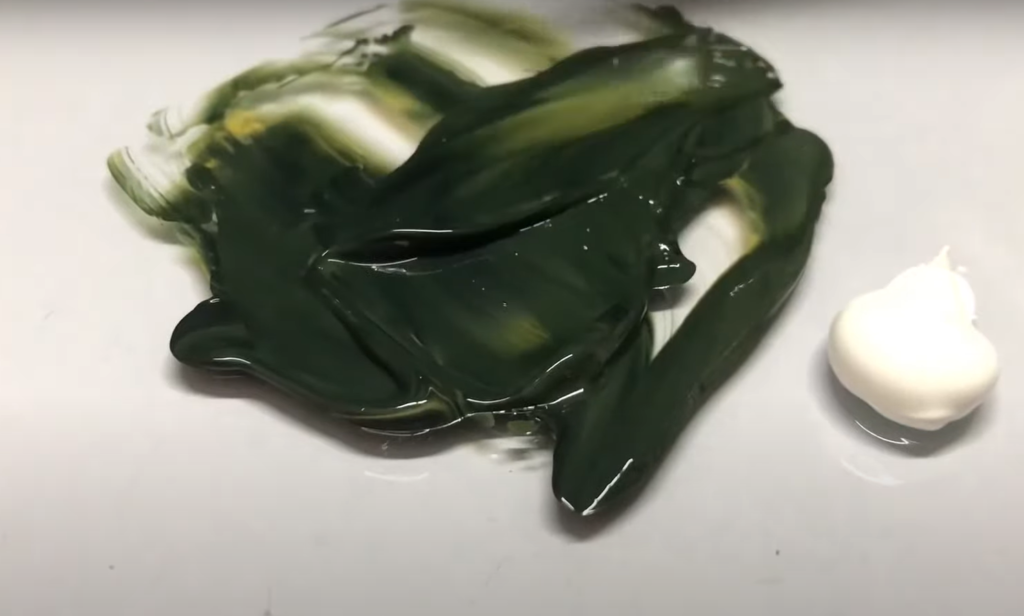
With these simple yet versatile techniques, you can unlock the world of sage green and infuse your artistic creations with its serene and natural allure. So go ahead, unleash your creativity, and paint with the soothing hues of sage green![1]
What Colors Go with Sage Green?
When it comes to complementing sage green, a wide range of colors can be considered. Neutrals, particularly shades of white, cream, and beige, work harmoniously with sage green, providing a calm and balanced backdrop that allows the green to shine. For a more vibrant aesthetic, pair sage green with brighter hues like magenta, deep blue, or sunflower yellow. Additionally, earthy tones such as terracotta, rust, or soft browns can evoke a natural, organic feel when matched with sage green. Incorporating these colors in your color scheme will add depth and visual interest to your space.
To create a cohesive look, consider adding texture and pattern. Incorporate textiles with different patterns and materials, such as geometric prints, woven fabrics, and textured wallpapers, to add visual interest and dimension to the room. This can be achieved through throw pillows, curtains, rugs, or even wallpaper.
Furthermore, consider the lighting in your space. Different lighting can affect how colors appear. Natural light brings out the true tones of sage green and enhances its calming properties. On the other hand, warm artificial lighting can create a cozy and inviting atmosphere, while cool lighting can add a modern and refreshing touch.
Remember, the goal is to create a color scheme that matches your personal style and the mood you want to set in your space. By considering these additional details, you can create a space that is not only visually appealing but also reflects your unique taste and personality.[1]
How to Make Sage Green Paint
How To Mix Sage Green Color Using Pigments
When it comes to mixing your own sage green using pigments, attention to detail is crucial, but the process can be incredibly rewarding. To begin, start by combining equal parts of blue and yellow pigments to create a basic green color. For this, Cobalt Blue and Cadmium Yellow are often recommended due to their vibrant hues. Take your time to thoroughly mix these pigments until you achieve a consistent and rich green shade.
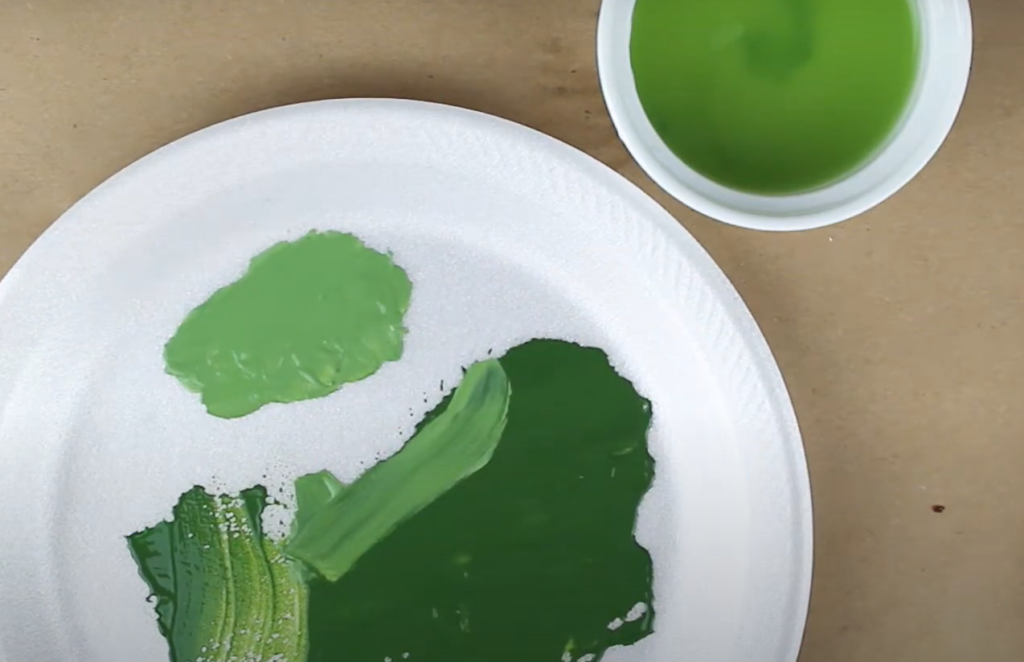
Once you have your base green, it’s time to add white pigment to lighten the color and give it that characteristic softness that sage green is known for. Titanium White is a popular choice for this purpose, thanks to its opacity and brightness. Remember to add the white pigment gradually, checking the color after each addition to avoid over-lightening it. This step is crucial in achieving the perfect balance between vibrancy and softness.
If you prefer a more subdued or grayer sage green, consider incorporating a touch of Mars Black or Payne’s Grey. These darker pigments can add depth and complexity to your final color, creating a unique shade that stands out.
As with any pigment mixing process, patience and experimentation are key. Take the time to explore different ratios and variations until you achieve your desired shade of sage green. It’s also important to mix enough pigment for your project, as recreating the exact same shade can be challenging. By giving attention to detail and allowing yourself to experiment, you’ll be able to create beautiful and personalized sage green pigments for all your artistic endeavors.
How To Make Sage Green Color Using Natural Ingredients
Creating a beautiful sage green color using natural ingredients can be a truly enjoyable and eco-friendly process. Let’s start by diving into the fascinating world of natural pigments. We’ll begin by harnessing the power of spinach leaves to create a vibrant base green color. The rich chlorophyll content in spinach offers a natural and lively green hue that is sure to captivate the eye.
To create this base color, simply take a handful of fresh spinach leaves and blend them with a touch of water. Once blended, strain the mixture to extract the gorgeous green pigment. Now, we’re ready to embark on the journey of achieving the distinctive muted tone of sage green.
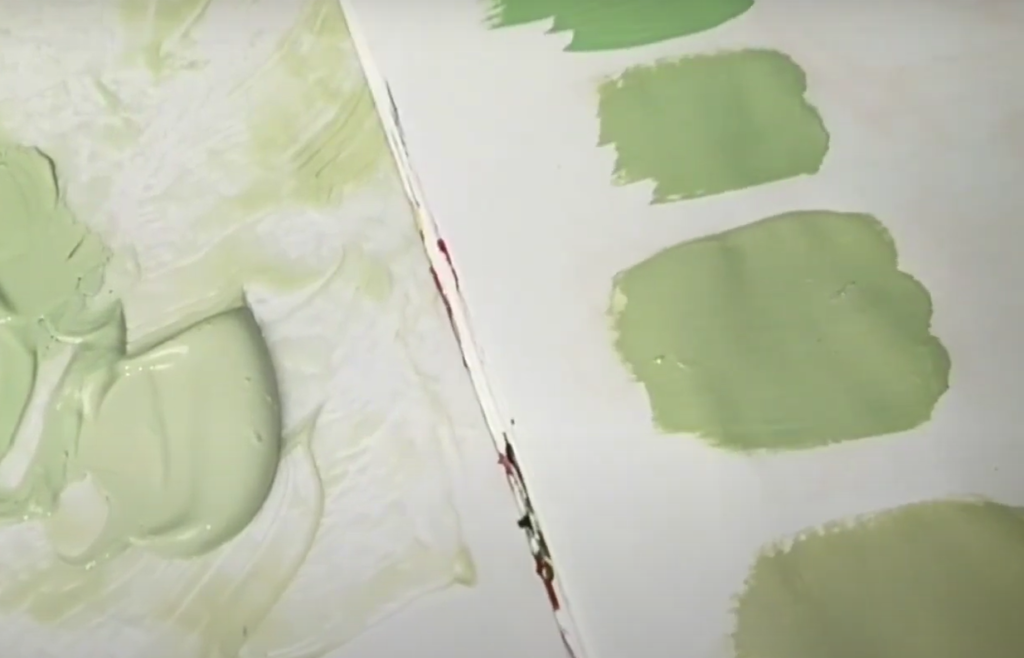
To achieve this desired shade, we need to introduce a white element to the mix. Natural clay comes to our aid, as it is readily available in a variety of white shades that can be easily obtained from craft stores or online. Begin by gradually incorporating the clay into the green pigment, mixing it in until you reach your desired shade. Remember, it’s always better to add slowly and check your color frequently, as you can add more pigment if needed but can’t take it away once it’s been added.
If you’re looking to introduce a subtle gray undertone to your sage green masterpiece, consider incorporating activated charcoal in small amounts. This can add depth and character to your color, creating a truly unique shade.
It’s important to keep in mind that using natural ingredients can result in slight color changes over time, which is part of the charm and allure of working with natural materials. Embrace the unpredictability and let it add an element of surprise to your creations. Remember, experimentation is key to achieving your own personalized shade of sage green. So, have fun and explore the endless possibilities that lie within the realm of natural color creation.
How To Make Sage Green Color Using Essential Oils
To create the beautiful sage green color using essential oils, you can start with a green-tinted oil like chlorophyll oil. This serves as the perfect base for your sage green shade. However, to achieve that characteristic muted tone and lighten the color, you will need a transparent or white-tinted oil. One excellent option is coconut oil, known for its naturally clear to slightly white hue.
Once you have your chlorophyll oil and coconut oil ready, the fun part begins! Begin by mixing a small amount of coconut oil into your chlorophyll oil. As you mix, keep a close eye on the color and observe how it starts to lighten. This gradual process allows you to achieve the perfect shade of sage green that you desire.
If you’d like to add a touch of gray to your sage green, consider incorporating a tiny amount of black seed oil or another dark-colored oil. This subtle addition can give your sage green a unique twist and enhance its visual appeal.
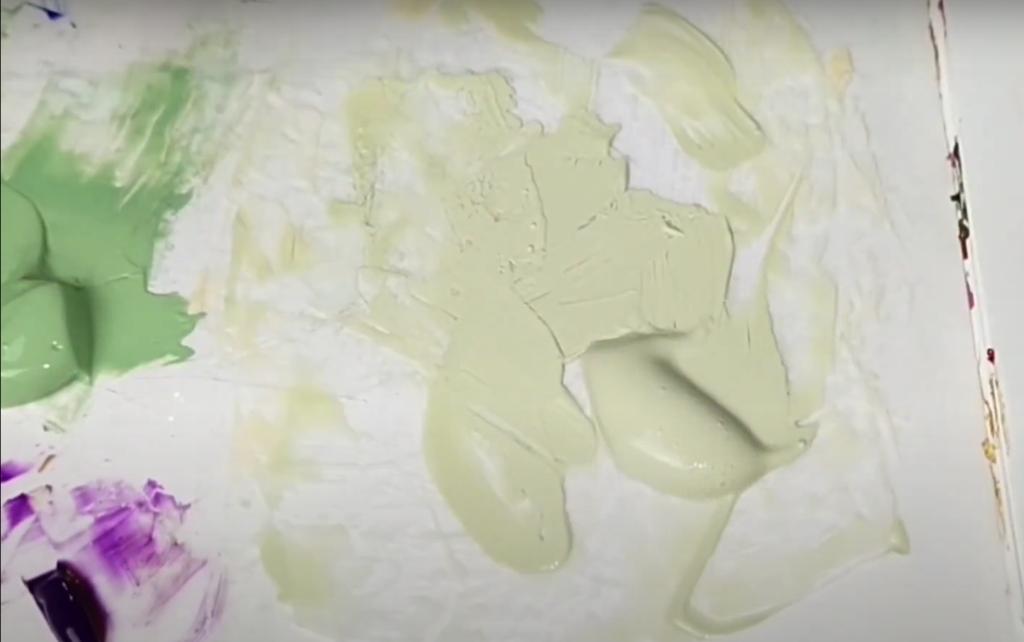
Remember, patience and careful experimentation are key when creating your own custom colors using essential oils. It’s always better to start with a smaller amount of oil and gradually add more if needed. Once the oils are mixed, you won’t be able to remove them, so take your time and enjoy the creative process.
Lastly, it’s important to note that while using essential oils for color can be a fantastic option, it may not be suitable for all projects. Depending on the texture and smell of your final product, essential oils can have varying effects. Therefore, it’s always a good idea to test a small amount first and ensure it aligns with your desired outcome.
Embrace the art of color creation and have fun exploring the possibilities with essential oils. Let your imagination run wild and create stunning sage green hues for your next project!
What Gel Colors Make Sage Green?
Creating a beautiful sage green shade using gel colors requires a perfect blend of three essential colors: leaf green, royal blue, and white. Leaf green serves as the primary color, providing the foundation for this captivating mix. Adding just the right amount of royal blue adds depth and richness to the green, resulting in a mesmerizing hue. Begin by carefully mixing equal parts of leaf green and royal blue, ensuring that the combination yields a deep and vibrant green that catches the eye.
To achieve the characteristic muted tone of sage green, introduce the white gel color gradually. The white gel color lightens the hue, lending an elegant and soothing touch to the overall blend. Remember to add the white gel color slowly, constantly checking the shade after each addition. This cautious approach ensures that the green doesn’t become too light, maintaining the perfect balance.
For those who desire a slightly grayer sage green, consider adding a subtle touch of black gel color. This addition enhances the richness and complexity of the shade, creating a unique variation of sage green that exudes sophistication.
When working with gel colors, patience is key. Feel free to experiment and adjust the ratios until you achieve your desired shade of sage green. The beauty of this process lies in the ability to create a custom color that perfectly complements your artistic vision.
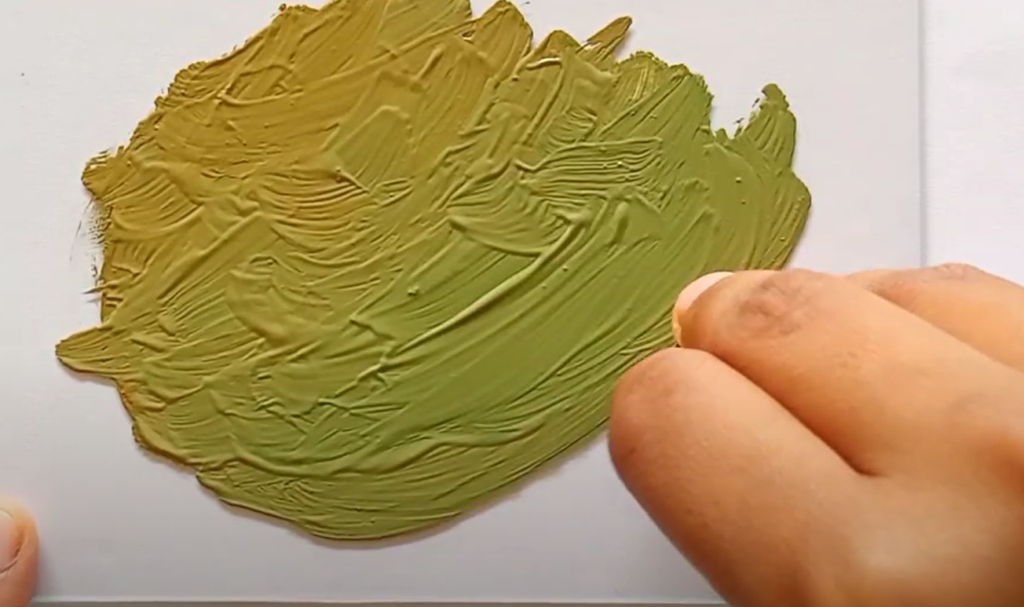
So, grab your gel colors, embrace your creativity, and embark on the journey of crafting your own exquisite shade of sage green. With attention to detail and a willingness to explore, you’ll discover a world of possibilities within this captivating color palette.[1]
What Tone is Sage Green?
Sage green, an earthy and muted shade of green, draws its inspiration from the color of dried sage leaves. This pale, gray-toned version of green is not only associated with nature, but also evokes a sense of calmness and tranquility. Just like the herbal plant it is named after, sage green exudes a soft and soothing tone that effortlessly creates a relaxing and natural aesthetic in both interior and graphic design.
The beauty of sage green lies in its versatility and the varied depth and saturation it can exhibit. Ranging from a deeper, grayish-green to a lighter, more pastel tint, the exact tone can be adjusted by adding more white for a lighter shade or incorporating gray to achieve a more muted appearance. Despite its understated quality, sage green stands as a sophisticated color that harmonizes effortlessly with a wide range of other hues, making it a versatile choice for any design palette.
So, whether you’re aiming to create a serene and tranquil environment or seeking a color that seamlessly complements other shades, sage green is a timeless choice that will add sophistication and natural charm to any space or design project.[2]
What Are The Different Shades Of Sage Green?
There are several captivating variations of the inviting, natural hue of sage green, each possessing its own distinct character and mood. These delightful variations can span from the lightest, ethereal shades to the deepest, more earthy tones, offering an extensive array of options to cater to diverse aesthetic preferences.
- Light Sage: This enchanting variation of sage green emerges as a paler, softer rendition, as it gracefully incorporates a higher percentage of white into its composition. With a delicate, pastel quality, it effortlessly crafts a serene and calming atmosphere within interior designs, invoking a sense of tranquility and peace.
- Dark Sage: As we delve deeper into the spectrum, we encounter the captivating allure of dark sage. This iteration of sage green boasts a deeper, more intense presence, with a lower quantity of white and a subtle infusion of blue. The result is a rich, bold color that exudes depth and sophistication, effortlessly elevating any color palette it graces.
- Gray Sage: True to its name, gray sage embraces a noticeably higher amount of gray, offering a muted and subdued quality. This shade beautifully captures the essence of modern, minimalist aesthetics, lending a touch of elegance and refinement to any design. Its understated charm creates a harmonious balance within spaces, allowing other design elements to shine.
- Earthy Sage: Venturing further along the spectrum, we encounter earthy sage, a delightful interpretation that leans towards the warmer, more organic side. This particular variation of sage green embraces a subtle hint of yellow or brown, infusing it with an earthy, natural feel. It effortlessly harmonizes with other earth tones, allowing for the creation of a rustic and homely aesthetic that embraces the beauty of nature.
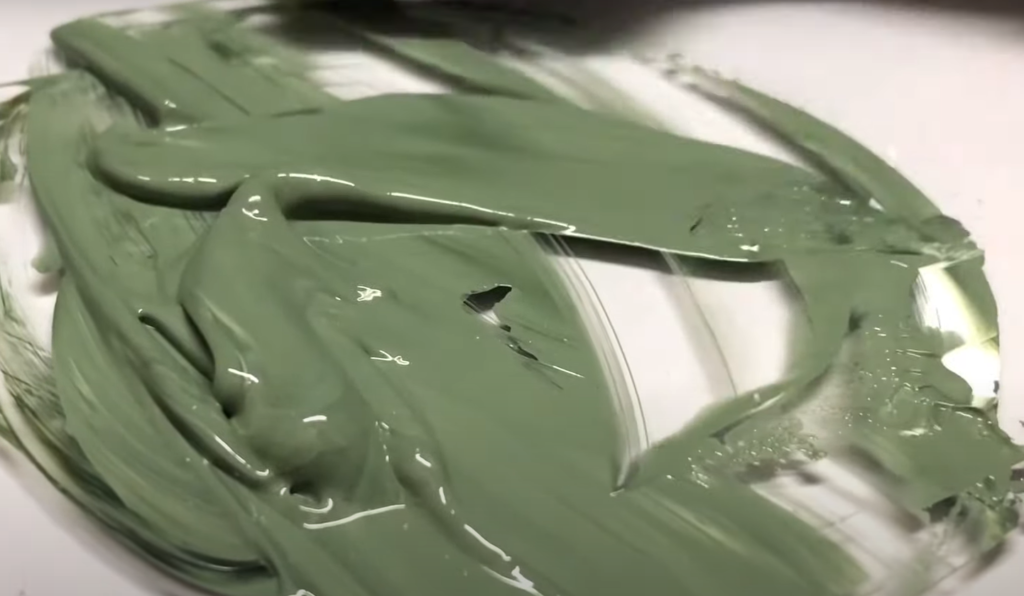
Remember, the art of achieving these captivating shades of sage green lies in the delicate balance of colors used in the mixing process, whether it be with paint, natural ingredients, pigments, or essential oils. Each variation holds its own unique charm, inviting you to explore and create captivating color palettes that evoke a multitude of emotions and sensations.[2]
How To Make Sage Green Color Look Fresh And Vibrant
To give the sage green color a fresh and vibrant feel, you can try introducing a hint of yellow or a bright, light green. These colors have the power to add a more lively and energetic quality to the otherwise muted sage green.
Begin by mixing your sage green as described above, carefully measuring the proportions to achieve the desired shade. Then, gradually add a tiny amount of yellow or light green, stirring and checking the color frequently. It’s important to add these additional colors slowly, as even a small amount can significantly alter the overall hue.
Bright whites can create a clean and crisp look, while deep blues can add a sense of depth and richness. Warm earth tones, such as rusty oranges or golden browns, can bring a cozy and inviting feel to your design.Remember, the key to achieving a fresh and vibrant sage green is to strike a balance between its muted quality and elements of brightness and energy. Don’t be afraid to experiment until you find the perfect combination of colors that suits your project.[2]
FAQ
What colors make sage green paint?
To create sage green paint, start with a mid-tone green as a base. Add a small amount of blue to deepen the shade, then gradually mix in white to achieve the muted tone of sage green. Be cautious with the amount of white, as adding too much can make it too light. Consider a touch of black if you want a grayish undertone. Take your time to adjust the mix until you achieve your desired shade of sage green.
What color green is closest to sage green?
Moss green is often considered closest to sage green among the different shades of green. Both hues draw inspiration from nature, with earthy and subdued tones.
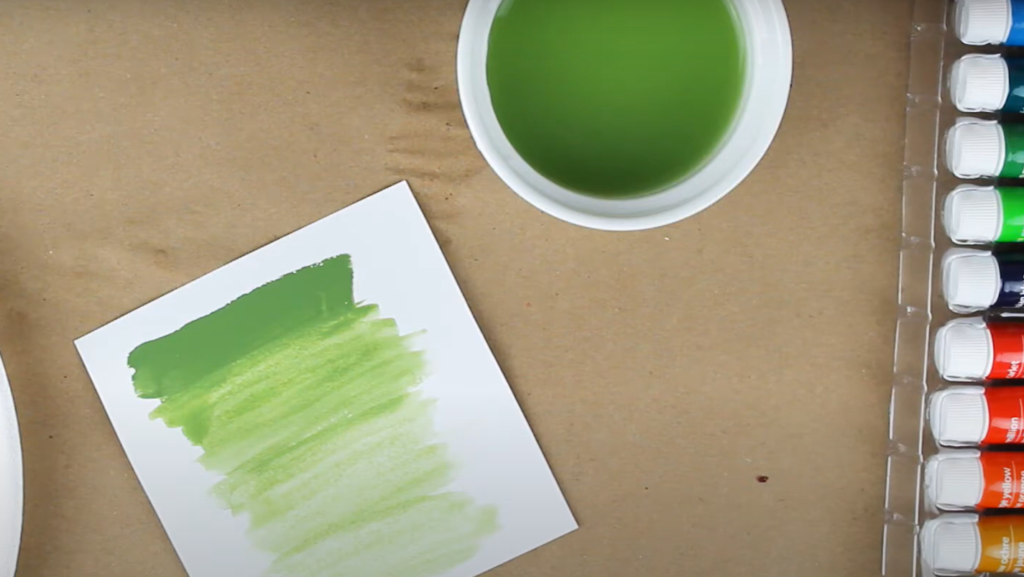
While sage green has a grayish undertone, moss green leans slightly towards yellow, giving it a warmer appearance. The shade of moss green, like sage green, can vary in depth and saturation. Other shades like olive green and seafoam may be close, but they often have more brown or blue undertones respectively. Each shade of green has its unique characteristics, so choose based on the desired mood and aesthetic of your project.
How do you make sage green RGB?
Creating the Sage Green color in digital art or web design involves using RGB color codes. The RGB color model allows for a wide range of colors by adjusting the intensity of red, green, and blue light.
It’s important to note that there may be variations of Sage Green, and you can adjust the values to achieve your preferred shade.How do you lighten sage green paint?
Lightning sage green paint is a simple process that involves adding white paint gradually to your existing mix. Stir thoroughly after each addition to ensure even color distribution. Keep in mind that the paint may appear slightly lighter when dry. If the color becomes too light, add a small amount of green or blue paint to darken it. The goal is to achieve a balanced, lighter sage hue while maintaining its distinctiveness.
What 3 colors make sage green?
To create the earthy and muted hue of sage green, combine green, blue, and white paint. Begin with a mid-tone green as the base, then add a touch of blue for depth. Gradually introduce white paint to lighten the hue and achieve the characteristic muted tone. Be mindful of not adding too much white. If needed, a small amount of black paint can be added to correct for a grayish tint. Patience and constant adjustment are key in reaching the desired shade of sage green.
Is sage green the same as mint green?
While sage green and mint green both belong to the green color family, they are distinctly different shades. Sage green, with its earthy and muted tones, possesses subtle gray undertones that imbue it with a subdued and almost antique feel. This particular shade draws its inspiration from natural elements, evoking a sense of tranquility and sophistication. On the other hand, mint green presents a lighter and more vibrant hue, boasting a cool undertone that leans towards the blue side of the spectrum. Its tone is often described as fresh and invigorating, reminiscent of the rejuvenating qualities found in nature. When contemplating between the two, it’s important to consider the overall mood and aesthetic you wish to achieve in your design project. By carefully choosing between sage green and mint green, you can effectively enhance the visual impact and emotional resonance of your creation.
Useful Video: Making Your Own Color – Sage Green Acrylic Paint, Green + Yellow + Gray = Sage
Conclusion
Understanding and creating the complex sage green color involves a delicate balance of green, blue, and white, with occasional hints of black, expertly combined to achieve the perfect muted earthy hue. While it shares similarities with shades like moss green, each color possesses unique characteristics that define its subtle differences.
Sage green’s tranquil and sophisticated appeal makes it a popular choice in various design and art projects, ranging from interior decor to fashion. Its versatility allows it to effortlessly blend into different styles, whether it’s a calming presence in a bohemian-inspired room or a refreshing accent in a modern minimalist space.
When working with sage green, whether mixing paints or manipulating digital colors, the key lies in gradual changes and careful observation. It requires a keen eye to recognize the subtle shifts in saturation and undertones that contribute to its overall harmony. Patience and precision are vital to achieving the perfect sage green shade, as even the slightest adjustment can make a significant difference.
Always remember, the beauty of art lies in the endless possibilities of color exploration and adaptation. With sage green as your muse, allow your creativity to flourish as you discover new ways to incorporate this captivating hue into your artistic endeavors. Embrace the journey of experimentation and let the fascinating world of colors inspire your imagination.
References:
- https://www.paintfits.com/how-to-make-sage-green-paint/
- https://www.celebratingcolor.com/four-steps-mixing-sage-green/










Leave a Review